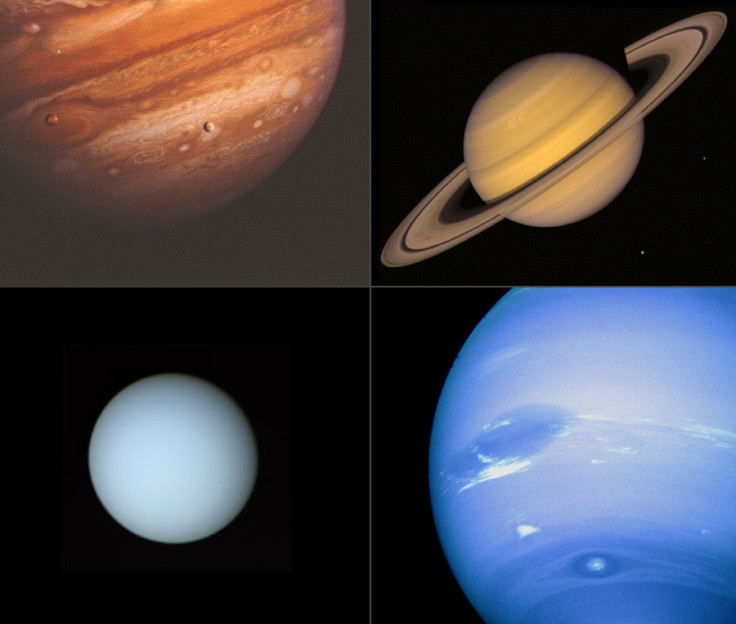Voyager 1: The furthest man-made object from Earth celebrates 40 years in space
The probe is currently travelling through interstellar space at speeds of nearly 40,000 mph
On 5<sup>th September 1977, NASA's Voyager 1 spacecraft launched from Cape Canaveral, Florida to mark the beginning of an extraordinary journey. Forty years later to the day, the probe - the only human creation to pass beyond the limits of our own Solar System - is drifting through interstellar space at nearly 40,000 mph, 13 billion miles from Earth.
Meanwhile, its sister craft, Voyager 2, which launched two weeks earlier, trails shortly behind, 11 billion miles from its starting point. Together, the two Voyager probes have vastly expanded our knowledge of what lies beyond the Earth.
"It is no exaggeration to state that the two Voyager spacecraft revolutionised our understanding of the outer solar system", said Carl Murray, a professor of mathematics and astronomy from Queen Mary University, London. " For example, prior to Voyager the moons around the outer planets were just points of light in our telescopes. Thanks to Voyager, they have become individual worlds, in their own right, each with identifiable craters and landscapes, showing us a diversity of structures few would have expected."
As, well as being the furthest man-made objects from the Earth, the Voyagers have passed numerous landmarks and made countless discoveries. Voyager 2, for example, is the only spacecraft to have flown by all four of the outer planets and was the first to image the rings of Jupiter, Uranus and Neptune.
Meanwhile, the two probes were the first to discover active volcanoes beyond the Earth on Io, the first to detect hints of an ocean outside our planet below the icy crust of Europa and the first to observe lightning on another world amidst Jupiter's violent storms. They can also be credited with identifying several new planetary moons, including 11 around Uranus.

Even though neither will come remotely near to another star system for at least 40,000 years, they are still providing us with fascinating insights into the entirely unexplored area where our sun's influence diminishes and interstellar space begins. All the more remarkable considering they run on technology with less computing power than an average smartphone today.
From its uniquely isolated location beyond the Solar System, Voyager 1 is teaching us more about the bubble of influence around the Sun, known as the heliosphere. Observations from the probe have shown researchers that cosmic rays – high energy beams of radiation originating from outside the Solar System – are up to four times more abundant in interstellar space than what we experience in the vicinity of Earth, suggesting the heliosphere acts as a kind of radiation shield for everything within it.
While Voyager 2 is still within the heliosphere, it is approaching interstellar space, presenting astronomers with an unprecedented opportunity to compare the region that forms the boundary between the two.
"None of us knew, when we launched 40 years ago, that anything would still be working, and continuing on this pioneering journey," said Ed Stone, a Voyager project scientist based at Caltech in Pasadena, California. "The most exciting thing they find in the next five years is likely to be something that we didn't know was out there to be discovered."
They key to the longevity of the Voyager mission is the crafts' long-lasting power supplies which have allowed them to beam back data to Earth to this day. Powered by decaying radioactive plutonium, they are expected to have enough juice to send back valuable data until there is no longer enough energy left to supply critical functions, estimated to be some point in the mid-to-late 2020s.

But even when the last working instruments fall silent, the Voyagers will continue their journeys into the cosmos, possibly for billions of years to come - long after the Sun has turned into a Red Giant and boiled the Earth's oceans rendering it totally uninhabitable. And on the off-chance that another civilization encounters either of the Voyagers, they will find the Golden Records aboard each craft - time capsules which contain images, sounds and music portraying the diversity of life on Earth for any passing aliens to enjoy.
"It's incredible to think that the Voyager probes were launched more than 40 years ago before many professional astronomers, including me, were born", said Richard J Parker, an astronomer from the University of Sheffield. "Many of their results are now part of our mainstream understanding of planetary and space science. The 40th anniversary should remind us of the longevity of science, and the vast returns in human knowledge, understanding and enlightenment that relatively small amounts of money provide."
© Copyright IBTimes 2025. All rights reserved.





















